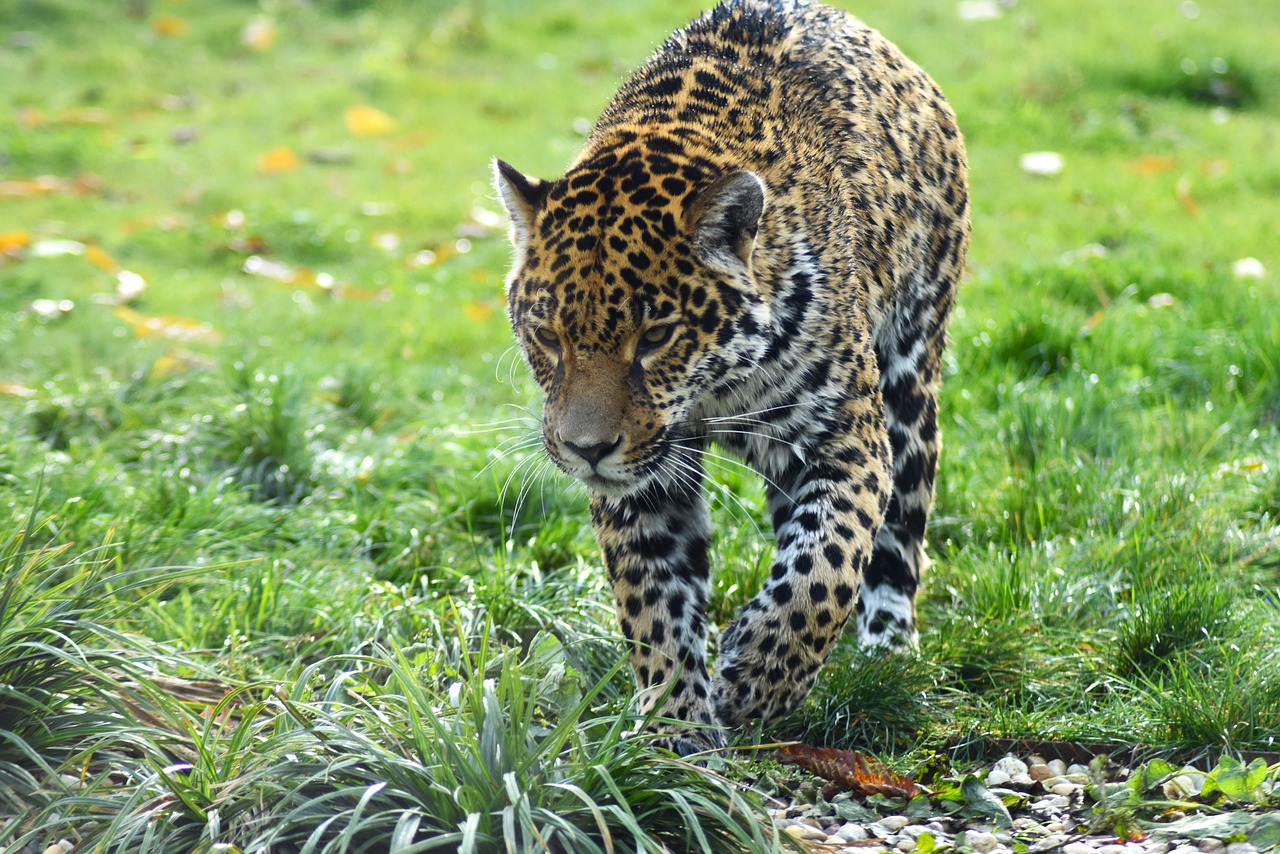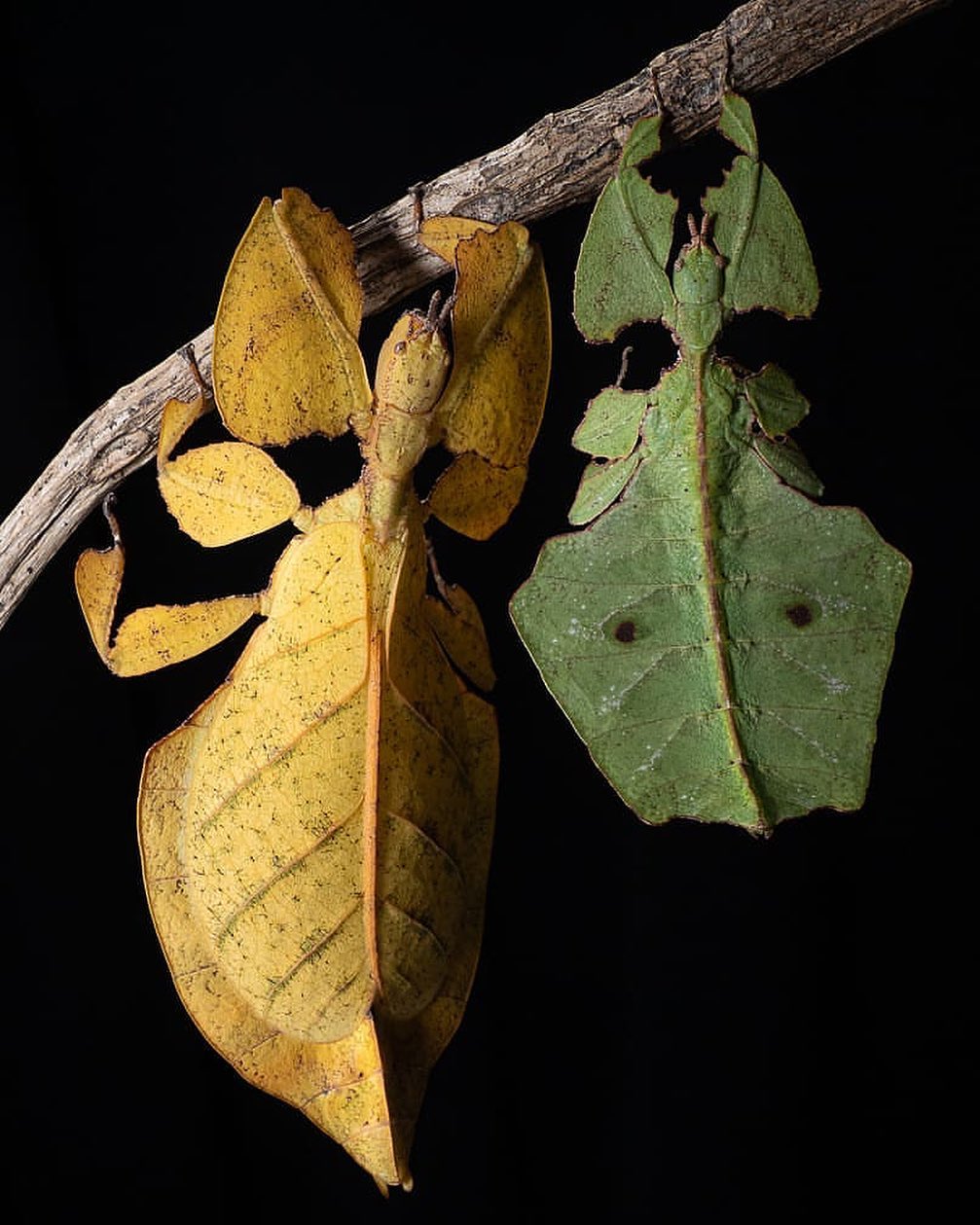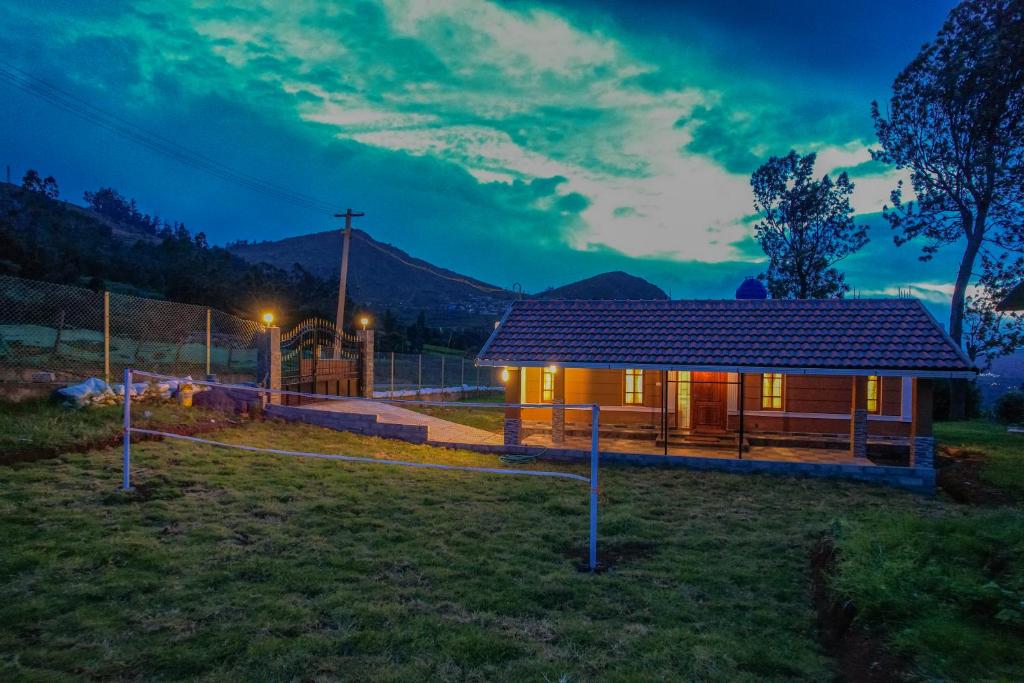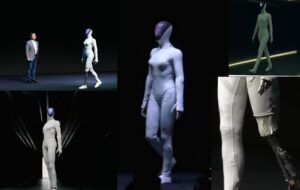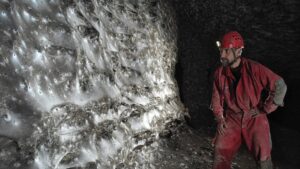 Pin
Pin Penduline Tit Bird / Photo by Michael Billerbeck
There are, in nature, certain mysteries that reveal themselves only upon close examination. The penduline tit nest is one such puzzle. To the casual observer, it appears to be nothing more than a grey pouch hanging from a willow branch. Soft, well-constructed, perhaps a bit exposed for safety. But this is where the casual observer would be mistaken.
Consider the facts carefully. The nest contains two entrances. Both appear equally accessible. Both seem to lead inside to where eggs should rest. Yet only one entrance actually reaches the nest chamber. The other is a cleverly constructed dead end. A false passage. A red herring, if you will. Now ask yourself this question, as any good detective must: why would a bird, working alone for weeks, invest precious time and energy building a room that serves no purpose? The answer, of course, is that it does serve a purpose. A snake arrives, drawn by the scent of eggs. It chooses an entrance, the obvious one at the top. It slithers inside and finds nothing. The eggs, meanwhile, rest safely behind a wall the snake cannot penetrate. The bird has committed the perfect crime, only in reverse. It has hidden the evidence in plain sight.
Table of Contents
The Architect With Feathers
 Pin
Pin Image by fotoczaty
The penduline tit is a small bird, no larger than your thumb from tip to base. It weighs approximately ten grams, which is to say, less than two sheets of paper. Yet this diminutive creature possesses an architectural instinct that would impress any builder. The male begins construction in early spring, selecting a location with the care of someone choosing a site for a country estate. He prefers willow trees near water. The branch must be thin and flexible, hanging downward at the tip. Thick, sturdy branches will not do. There is a reason for this specificity, though it will not become clear until later.
The construction materials themselves tell us much about the bird’s intelligence. He collects plant down from willow catkins, which provides softness and insulation. He gathers spider silk, which serves as both adhesive and binding thread. Thin strips of bark and grass stems form the structure. For two weeks, he works from dawn until dusk, flying back and forth with materials clutched in his small beak. He weaves these elements together with a technique that can only be described as felting. The result resembles a grey sock hanging from the branch, sealed at the bottom, with an opening near the top. To the untrained eye, it looks finished. But the most important work has only just begun. The bird must now create the deception that will save his offspring.
The Chamber of Deception
 Pin
Pin Penduline Tit Bird nest architect / Image by notmellymyers
When the male finishes weaving the outer shell, he faces a critical decision. He must now construct the interior in such a way that will confuse any intruder who might come searching for eggs. The solution he arrives at is both simple and brilliant. He creates two distinct spaces inside the nest, but only one will hold his future offspring. The other exists solely to mislead.
The false chamber sits at the top of the nest, accessible through the most visible entrance. This opening appears inviting to a predator. A snake, for instance, can easily spot it and slither inside without difficulty. Once through this entrance, the snake finds itself in a rounded space that seems promising at first. The walls feel soft. The temperature inside is warm. But as the snake explores further, pushing its head against the fabric walls, it discovers nothing. No eggs. No chicks. Just an empty pocket that leads nowhere. The snake has entered what amounts to a decoy room, carefully constructed to waste the predator’s time and energy. Meanwhile, the true nest chamber lies hidden behind a partition wall the snake cannot breach. This second room, the real nursery, connects to a different entrance entirely. This entrance sits lower on the nest and requires approaching from a specific angle that only the parent birds understand. The female, when she arrives to inspect the male’s work, will know instinctively which door leads to safety. She will lay her eggs there, behind the false wall, in a space no predator has ever successfully penetrated by accident.
The Selection Process and What It Reveals
 Pin
Pin Image by Adriannasturica
The female penduline tit does not accept every nest she encounters. She is a discerning judge, and for good reason. Her eggs represent an enormous investment of energy and time. If she chooses poorly, her entire breeding season fails. When she arrives at a potential nest site, she conducts what can only be described as a thorough inspection. She enters through both openings, testing the structure from multiple angles. She pushes against the walls with her beak and feet, checking for weaknesses.
She evaluates the thickness of the partition between the false chamber and the true nesting room. If the wall seems too thin, a determined predator might break through. If the false entrance appears unconvincing, predators might not waste time there and discover the real chamber too quickly.
What makes this behavior particularly fascinating is what it tells us about inheritance and learning in birds. The female has never attended architecture school, yet she knows exactly what constitutes a well-built nest. She inherited this knowledge through countless generations of selection pressure. Her ancestors who accepted poorly built nests lost their eggs to predators. Those bloodlines ended. The females who rejected shoddy construction and waited for better builders passed their genes forward. Over thousands of years, this created females with impeccable standards and males with exceptional building skills. The system works because both partners have evolved together, like a lock and key that fit perfectly. The male knows how to build the deception. The female knows how to recognize it. Any predator watching from outside sees only a simple grey pouch swaying in the breeze. They have no idea they are looking at the result of an evolutionary arms race that has been running since before humans built their first mud huts.
The Predators Who Keep Losing
Snakes represent the primary threat to penduline tit eggs, though they are not the only danger. Rats, weasels, and certain climbing birds also attempt raids on these nests. Each predator brings a different hunting strategy, yet all of them fall victim to the same fundamental error. They trust their senses over their intellect. A snake, for instance, relies heavily on its ability to detect heat and chemical signals. When it approaches a penduline tit nest, it can smell that eggs are present somewhere inside the structure. The scent particles drift through the woven fibers and reach the snake’s tongue. The snake becomes convinced that food waits just beyond the entrance. It sees the opening at the top of the nest and assumes this is the path to its meal.
What happens next demonstrates why sensory information alone cannot solve every puzzle. The snake enters through the top opening and begins exploring the interior chamber. It coils and uncoils, pressing its body against every surface, searching for the source of that egg scent. The smell grows stronger inside the nest, which only increases the snake’s conviction that it has chosen correctly. But the scent permeates through the partition wall from the hidden chamber on the other side. The snake is essentially smelling through a barrier it cannot see or understand. After several minutes of fruitless searching, most snakes eventually give up and leave. Some return multiple times, entering through the same false entrance repeatedly, never learning that another entrance exists. The bird has exploited a weakness in the predator’s cognitive abilities. Snakes are intelligent hunters within their domain, but they lack the capacity to understand architectural deception. They cannot conceive that a bird might deliberately build a useless room simply to waste their time. This blind spot in predator psychology is exactly what keeps the eggs safe generation after generation.
The Construction Timeline and Its Curious Interruptions
The male penduline tit does not build his nest in one continuous effort. The construction unfolds in stages, with deliberate pauses between each phase. This pattern reveals something rather interesting about the bird’s breeding strategy. The male builds the outer shell first, which takes roughly ten to fourteen days. Once this initial structure hangs complete from the branch, he stops working. He begins singing from a nearby perch, advertising his creation to any female within hearing distance. He has built what amounts to a show home, and now he must wait to see if anyone wishes to move in.
If a female arrives and approves of his work, something unexpected often occurs. The pair mates, and then the female may complete the interior chambers herself while the male abandons the project entirely. He flies off to begin construction on a second nest at a different location, hoping to attract another female. This behavior, known as sequential polygamy, means that some males father chicks in multiple nests during a single breeding season while taking no part in raising any of them. Other males remain with their original partner and help feed the chicks after they hatch. The system appears almost ruthlessly pragmatic. Meanwhile, some females also practice this strategy in reverse, laying eggs in one nest and then departing to find another male and repeat the process. The chicks in the abandoned nest face poor odds of survival unless the remaining parent receives help. Yet this seemingly callous behavior has persisted because it sometimes produces more surviving offspring than faithful monogamy would. Evolution does not reward virtue. It rewards whatever strategy produces the most descendants. The penduline tit has discovered that deception works on multiple levels, not just in architecture but in romance as well.
The Material Science Behind the Walls
The partition wall that separates the false chamber from the true nesting room deserves particular attention. This wall must satisfy two competing requirements that seem almost contradictory. It must be thick enough to prevent predators from breaking through, yet light enough that the entire nest can hang from a single thin branch without collapsing. The penduline tit solves this engineering problem through material selection rather than bulk.
The bird uses spider silk as the primary binding agent in the partition wall. Spider silk possesses a tensile strength greater than steel of the same diameter, which allows the bird to create a thin but remarkably strong barrier. The male weaves this silk through layers of plant fibers in a crosshatch pattern, similar to how humans reinforce concrete with steel rebar. He adds extra density to this internal wall compared to the outer shell, packing the fibers more tightly together. When a snake pushes against this barrier from inside the false chamber, the wall flexes slightly but does not tear. The give in the material actually works to the nest’s advantage because it absorbs the force of the impact rather than resisting it rigidly. A rigid wall might crack under pressure, but a flexible wall bends and returns to its original shape. The snake interprets this flexibility as a sign that nothing solid lies beyond, when in fact the opposite is true. The wall’s springy quality disguises its strength. Additionally, the male often incorporates slightly sticky plant resins into the partition, which creates an unpleasant texture that discourages predators from persisting in their attempts to breach it. Every element serves multiple purposes, nothing is wasted, and the entire structure weighs less than a tablespoon of sugar despite its complexity.
The Hidden Entrance and How Parents Navigate It
The true entrance to the nesting chamber presents a puzzle that only the parent birds can solve. This opening does not sit where logic would suggest. Most birds place their nest entrance at the top or side of the structure, positioned for easy access. The penduline tit does the opposite. The real entrance hides near the bottom of the nest, often on the side facing away from the most obvious approach path. A bird must fly up from below at a specific angle, then twist its body mid-flight to slip through the opening. This maneuver requires precision and prior knowledge of exactly where to aim.
The parent birds learn this entrance location during the construction and inspection phase, committing it to memory through repeated practice. They approach from the same angle every time, their flight path becoming automatic through repetition. A predator watching from a distance sees the birds disappearing into the nest but cannot discern the exact entry point because the approach happens too quickly. The snake or rat that later investigates finds the top entrance first because it appears more accessible and logical. By the time a predator discovers that a second opening exists, it has usually already invested significant effort exploring the false chamber and often gives up entirely. The positioning of this hidden entrance also provides a secondary benefit relating to weather protection. Rain typically falls from above, which means the top entrance in the false chamber catches most of the water. The lower entrance remains relatively dry, keeping the egg chamber and its precious contents protected from moisture. The bird has essentially created a drainage system that directs water into the decoy room while keeping the nursery comfortable. Every design choice serves multiple functions, stacking advantages upon advantages until the entire system becomes nearly impregnable through accumulated small cleverness rather than any single dramatic feature.
The Evolution of This Behavior and What It Cost
The penduline tit did not always build nests with false chambers. Thousands of generations ago, its ancestors likely constructed simpler pouches with a single entrance and no interior walls. Then something shifted in the environment. Perhaps snake populations increased, or a new predator species entered the territory. Whatever the trigger, the birds that built slightly more complex nests began surviving at higher rates than their neighbors. A mutation that caused one bird to weave a small internal fold survived because that fold confused a snake just long enough for the parent to drive it away. That bird’s offspring inherited the tendency toward adding folds. Over time, these accidental architectural features became more elaborate and deliberate.
This evolutionary process required payment in the form of failed nests and dead chicks. Every improvement in nest design came because simpler designs failed catastrophically. The birds that kept building basic nests watched their eggs disappear into snake bellies season after season until their genetic line vanished entirely. The survivors were those whose random mutations happened to produce better deceptions. Natural selection is not a gentle teacher. It eliminates the slow learners permanently. The false chamber design we see today represents thousands of years of trial and error, with error meaning death. The precision of the modern penduline tit nest exists because anything less precise was tested and found wanting. The species paid for this knowledge with countless lost generations. Now the descendants benefit from that terrible tuition cost. They build perfect deceptions instinctively, never knowing that their ancestors died learning these same lessons through failure. The nest hangs in the willow tree looking innocent and soft, but it contains within its fibers the accumulated wisdom of catastrophe survived.
The Geography of Deception
The penduline tit makes its home across a vast stretch of territory that spans from Western Europe through Central Asia. You can find these birds in France, Germany, and the Netherlands, then eastward through Poland, Hungary, and Romania. Their range continues through Turkey and into the Middle East, reaching as far as Kazakhstan and parts of China. They prefer lowland areas near water, particularly around rivers, lakes, and marshland edges where willow trees grow in abundance. The climate in these regions varies considerably, from the mild winters of Southern Europe to the harsh continental cold of Central Asia. Yet the birds thrive in all these locations because their nest design adapts well to different weather conditions.
These birds avoid dense forests and mountain regions. They need open areas where willows and poplars grow along waterways. The thin, flexible branches of these trees provide the perfect anchor points for their hanging nests. In some parts of their range, particularly around the Danube River basin and the wetlands of Hungary, penduline tits exist in relatively high concentrations. These areas offer ideal habitat with extensive reed beds and scattered willows. In other regions, the birds appear more scattered, limited by the availability of suitable nesting trees. Their distribution has shifted somewhat over the past century as wetlands have been drained for agriculture and development. Some populations have declined in Western Europe while others remain stable in Eastern regions where wetlands still exist in their natural state. The birds that survive are those that found territories with the right combination of water, willows, and relatively low human disturbance. Climate change may push their range northward in coming decades as temperatures rise, though they will always remain tied to areas where their preferred nesting trees can grow.
What Happens When the System Fails
No defense system achieves perfect success, and the penduline tit nest occasionally fails despite its sophisticated design. Some predators possess enough persistence or intelligence to eventually discover the hidden entrance. Certain snake species, particularly those that hunt bird nests regularly, have learned through experience that penduline tit nests contain multiple openings. These educated predators spend more time investigating the exterior of the nest before entering, sometimes locating the true entrance through systematic exploration. When this happens, the eggs are lost, and the parent birds must begin the breeding cycle again if enough season remains.
Weather also compromises nest security in ways the birds cannot control. Heavy storms sometimes tear nests from their branches entirely, sending eggs crashing to the ground. Prolonged rain can saturate the nest materials, making the structure heavy and causing the supporting branch to break under the added weight. In some cases, the moisture penetrates the false chamber and seeps through the partition wall into the egg chamber, flooding the nest and drowning developing embryos. Extreme heat presents different problems, particularly in the southern portions of their range where summer temperatures climb above forty degrees Celsius. The enclosed nest design that protects against predators also traps heat inside. Parent birds must spend significant time away from the nest to avoid overheating, which leaves eggs vulnerable to temperature stress or creates opportunities for quick predators to strike while the nest sits unguarded. Additionally, the elaborate construction requires substantial time and energy investment. Males that build multiple nests in a season sometimes cut corners on later constructions, producing inferior nests with thinner partition walls or poorly concealed true entrances. These substandard nests fail more frequently, which suggests that quality control matters tremendously in this system.
The Future of These Remarkable Architects
The penduline tit faces an uncertain future despite possessing one of nature’s most ingenious nest designs. Habitat loss presents the most immediate threat to their survival. Across Europe and Asia, wetlands continue disappearing as humans convert these areas into farmland, housing developments, and industrial zones. When the willows vanish, so do the nesting sites. The birds cannot simply relocate to different tree species because their construction technique specifically requires the thin, drooping branches that willows provide. Oak trees and pines have branches too rigid and too high off the ground. The nest design that evolved over thousands of years works only in very particular circumstances, which makes the species vulnerable when those circumstances change rapidly.
Climate change adds another layer of complexity to their survival prospects. Rising temperatures may expand suitable habitat northward into Scandinavia and Russia, but this assumes the willow trees will also migrate northward at the same pace. Trees move slowly across landscapes compared to birds. Additionally, changes in rainfall patterns could alter the distribution of wetlands, creating new habitat in some areas while destroying it in others. The birds might adapt their nesting behavior over time, perhaps learning to use different tree species or modifying their nest architecture to suit new conditions. Evolution allowed them to develop false chambers over millennia. Perhaps it will guide them through these new challenges as well. However, evolution requires time measured in thousands of years, while habitat destruction happens in decades. Conservation efforts in some countries now protect key wetland areas specifically to preserve breeding sites for these and other specialized species. Whether these protected zones will prove sufficient remains an open question. The penduline tit has survived by being clever. Now it must also be lucky enough to find places where its cleverness still matters.
FAQs
The male typically spends two to three weeks constructing the outer shell and interior chambers. However, if a female accepts the nest, she may add finishing touches herself while the male abandons the project to start building elsewhere.
Some experienced snakes that hunt bird nests regularly do learn that penduline tit nests have multiple openings. These educated predators search more carefully and occasionally succeed in finding the hidden entrance, though most predators never figure out the deception.
Yes, this behavior appears to be instinctive across the entire species. Every male penduline tit constructs the false chamber design without being taught, having inherited this knowledge through thousands of generations of evolution and natural selection.
Both males and females practice what scientists call sequential polygamy. After mating, one parent may leave to find another partner and start a second family, leaving the remaining parent to raise the chicks alone or sometimes abandoning the nest entirely if neither parent stays.
The nests gradually deteriorate through autumn and winter as rain and wind break down the plant fibers. Some mice and other small animals occasionally move into abandoned nests for shelter, discovering the hidden chamber that the original predators never found during the breeding season.

